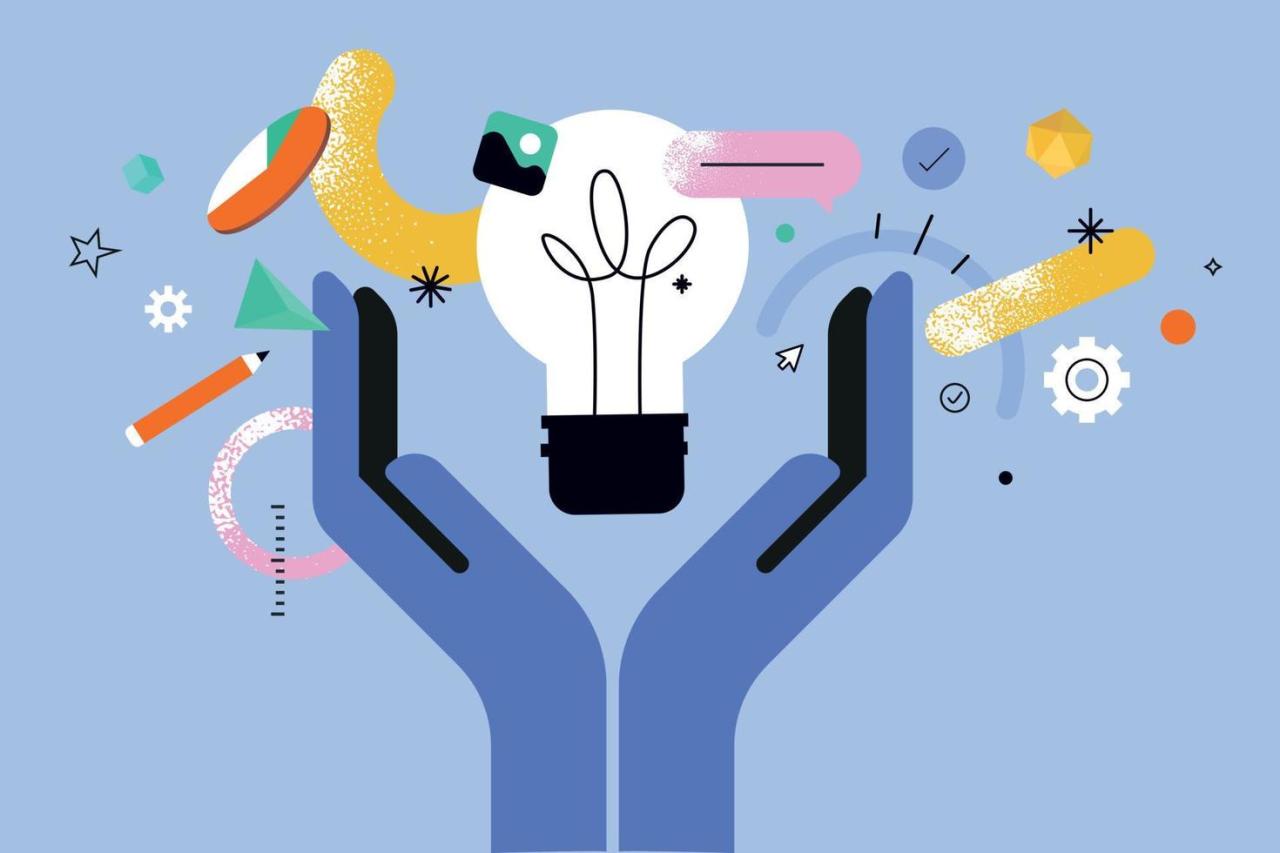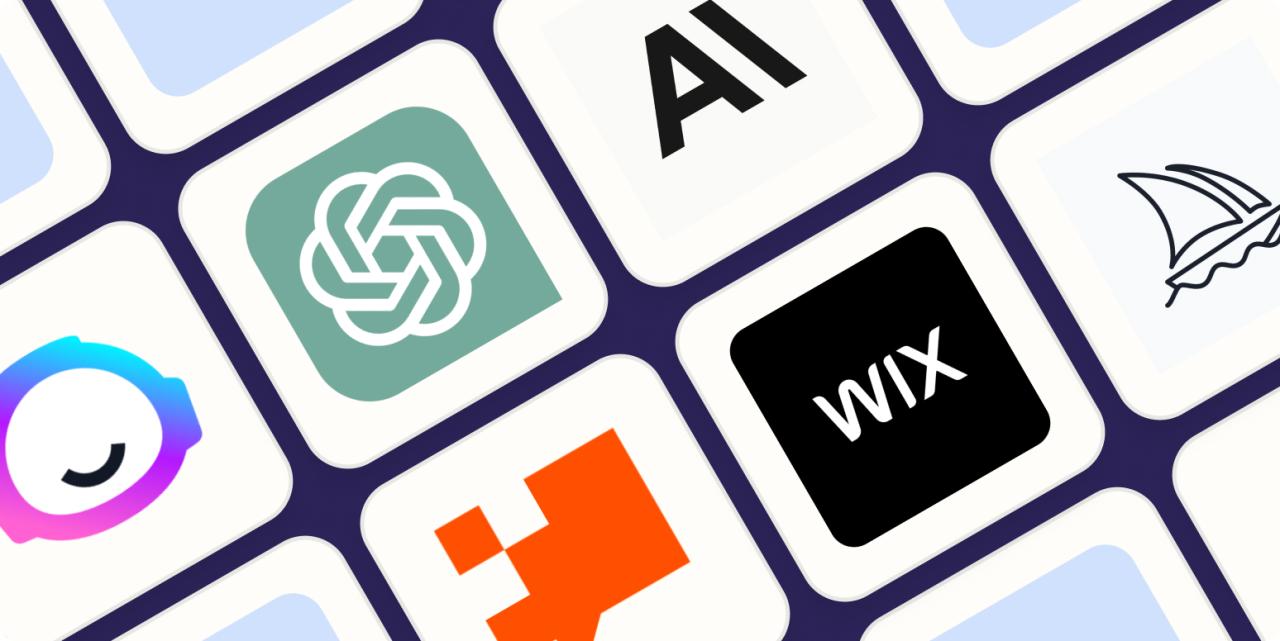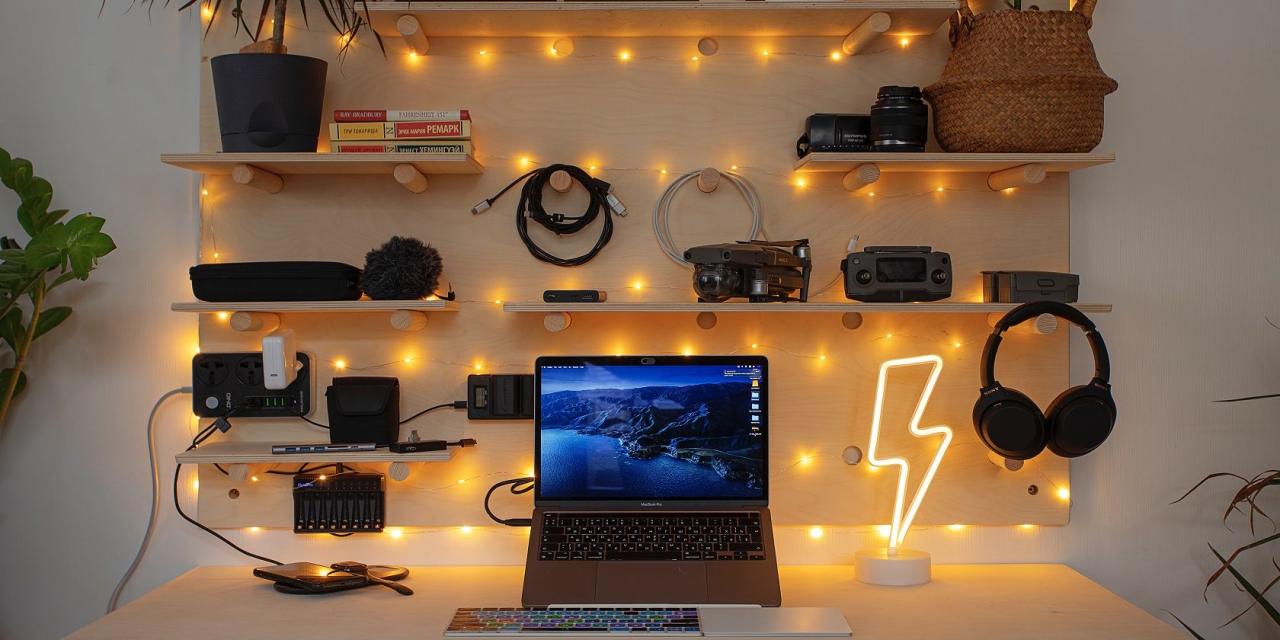Creative Suite Upgrades Boost Your Flow

In the dynamic and ever-evolving world of digital creation, the tools wielded by artists, designers, filmmakers, musicians, and writers are as crucial as their innate talent. What was once a collection of disparate, often clunky, software applications has matured into integrated creative tool suites, designed to streamline workflows, amplify imagination, and unlock new artistic possibilities. The continuous evolution and upgrades within these suites are not merely incremental improvements; they represent profound shifts in how creative work is conceived, executed, and shared. These advancements are driven by breakthroughs in Artificial Intelligence (AI), cloud integration, and a relentless pursuit of intuitive user experiences, fundamentally redefining the landscape of creative expression.
This comprehensive article delves deep into the burgeoning world of creative tool suites, exploring the core technologies that fuel their advancements and their transformative impact across diverse creative disciplines. We will uncover how powerful real-time rendering, intelligent automation, seamless collaboration features, and integrated asset management are converging to create a future where creativity is not only more efficient and accessible but also more interconnected and responsive to the demands of modern content creation. Our aim is to provide a detailed roadmap for understanding this exciting frontier, highlighting the undeniable benefits, the critical considerations, and the immense potential of leveraging these indispensable digital instruments to elevate your output and accelerate your creative flow.
The Digital Renaissance

The journey of digital creativity began with basic software programs, each serving a singular purpose – a simple drawing tool, a rudimentary word processor. As computing power grew, these tools became more sophisticated, but often remained siloed. The true revolution began with the concept of the “suite,” where multiple applications designed for different creative tasks (e.g., image editing, vector graphics, desktop publishing) were bundled together, sometimes with limited interoperability.
Today, however, “suite upgrades” imply much more than just a new version number. They represent a fundamental shift towards:
- Seamless Interoperability: Tools within a suite communicate effortlessly, allowing for fluid transitions between tasks (e.g., editing a photo in one app and instantly sending it to a layout program).
- AI-Powered Augmentation: Artificial Intelligence is increasingly integrated to automate tedious tasks, suggest creative options, and even generate content, freeing artists to focus on high-level conceptualization.
- Cloud-Based Collaboration: Real-time collaboration features are becoming standard, enabling geographically dispersed teams to work on shared projects, fostering unparalleled teamwork.
- Performance Enhancements: Leveraging faster processors, GPUs, and optimized code, upgrades ensure smoother performance, faster rendering, and quicker response times, even with complex files.
- Democratization of Advanced Features: Complex functionalities are often made more accessible through intuitive interfaces, visual scripting, or AI assistance, lowering the barrier to entry for aspiring creators.
- Adaptive Workflows: Suites are evolving to understand and adapt to a creator’s unique workflow, offering personalized shortcuts and suggestions.
This continuous stream of upgrades transforms creative tools from static programs into dynamic, intelligent partners, constantly pushing the boundaries of what is creatively possible and efficiently achievable.
Key Areas of Suite Upgrades
Modern creative suites are complex ecosystems. Upgrades often focus on enhancing specific aspects of the creative pipeline, bringing significant improvements across various disciplines.
A. Core Performance and Optimization
Fundamental improvements that make the software run faster, smoother, and more reliably.
- GPU Acceleration: Increasing reliance on Graphics Processing Units (GPUs) for computationally intensive tasks like rendering, filtering, real-time effects, and video encoding. Upgrades focus on leveraging the latest GPU architectures (NVIDIA RTX, AMD Radeon RX) for significant speed boosts.
- Multi-Core and Multi-Threading Optimization: Software is increasingly optimized to utilize all available CPU cores and threads, allowing for parallel processing of complex tasks, leading to faster computations and a more responsive interface.
- Memory Management: Improved algorithms for managing RAM, reducing crashes, allowing larger files to be handled, and optimizing caching for quicker access to frequently used data.
- File Format Optimization: Faster loading and saving of large project files (e.g., PSD, AI, video project files), and more efficient handling of complex layers and assets.
- Real-time Previews and Rendering: Significant advancements in allowing creators to see the final output (e.g., video effects, 3D renders) in real-time or near real-time as they work, drastically reducing iteration time.
B. Artificial Intelligence (AI) and Machine Learning (ML) Features
AI is arguably the most transformative area of upgrades, augmenting human creativity and automating mundane tasks.
- Generative AI:
- Image Generation: Tools like Adobe Firefly (integrated into Photoshop, Illustrator) enable users to generate images, textures, patterns, and even extend existing scenes from simple text prompts.
- Text Effects/Styles: AI to generate stylized text, manipulate fonts, or suggest suitable typography.
- Content-Aware Tools: Advanced algorithms for intelligent object selection, background removal, content-aware fill (infilling areas after removing objects), and image upscaling with incredible detail.
- AI for Video & Audio: Automated transcription, intelligent reframing, noise reduction, music generation, and even initial rough cuts based on script analysis.
- Smart Selection and Masking: AI-powered tools that intelligently select complex objects, hair, or skies with a single click, vastly reducing manual masking time.
- Neural Filters/Effects: Applying complex stylistic or corrective effects with a single slider, such as changing facial expressions, relighting scenes, or artistic transformations, using trained AI models.
- Personalized Suggestions: AI can learn a creator’s style or project requirements and suggest relevant assets (stock images, fonts, templates), brushes, or effects.
C. Cloud Integration and Collaborative Workflows
The shift to cloud-based infrastructure has revolutionized how creative teams work together, especially in remote and hybrid environments.
- Real-time Co-creation: Features that allow multiple creators to work on the same project file simultaneously, seeing changes instantly (e.g., Figma for UI/UX, Google Docs for writing, shared projects in Adobe tools).
- Cloud-Based Asset Management: Centralized storage for creative assets (images, video clips, 3D models) accessible from anywhere, with robust version control and automatic backups.
- Seamless File Syncing: Automatic synchronization of project files and settings across all a user’s devices (desktop, laptop, tablet), enabling continuity of work.
- Cloud Rendering and Processing: Offloading computationally intensive tasks (e.g., 3D rendering, video encoding, complex AI processing) to cloud servers, drastically speeding up production times and reducing the need for powerful local machines.
- Simplified Sharing and Feedback: Easy sharing of designs and prototypes with clients and stakeholders for review, comments, and approvals, often with integrated annotation tools.
D. User Interface (UI) and User Experience (UX) Enhancements
Making powerful tools more intuitive and enjoyable to use.
- Streamlined Workspaces: Customizable workspaces, cleaner interfaces, and more intuitive layouts that adapt to the user’s current task.
- Contextual Tools: Tools that appear or change based on the selected object or active task, reducing clutter.
- Enhanced Accessibility Features: Improvements in features for users with disabilities (e.g., better screen reader support, customizable high-contrast modes, voice control).
- Improved Onboarding: Better tutorials, guided tours, and in-app help for new features and complex workflows.
E. Expanded Cross-Discipline Integration
Breaking down silos between different creative applications and disciplines.
- Universal Asset Exchange: Improved interoperability between different creative applications, allowing for easier import/export of assets (e.g., 3D models into video editors, vector graphics into motion design tools) with better preservation of layers and properties.
- Shared Design Systems: Integration of design systems and component libraries across UI/UX, graphic design, and even development tools (e.g., Figma’s component libraries, Adobe XD’s shared assets) for consistency.
- Bridge to Other Industries: Enhanced connections between creative suites and tools used in engineering, architecture (e.g., BIM integration), and gaming (e.g., direct export to game engines).
The Transformative Impact of Upgraded Creative Tool Suites

These continuous upgrades are not just making designers’ lives easier; they are fundamentally altering the creative industries and enabling new forms of content creation.
A. Accelerated Creative Workflows
- Faster Ideation and Prototyping: Generative AI and instant preview capabilities allow creators to rapidly test ideas, iterate on designs, and prototype concepts in a fraction of the time.
- Reduced Manual Effort: AI automation takes over repetitive and tedious tasks (e.g., masking, rotoscoping, data entry for motion graphics), freeing artists to focus on core creative decisions.
- Quicker Revisions: Cloud collaboration and non-destructive editing enable rapid feedback loops and swift implementation of revisions.
B. Enhanced Collaboration and Global Creativity
- Seamless Teamwork: Geographically dispersed teams can work together as if they were in the same room, eliminating communication barriers and time zone challenges.
- Diverse Talent Pool: Businesses can leverage creative talent from anywhere in the world, fostering more diverse perspectives and specialized skills.
- Streamlined Client Feedback: Interactive prototypes and cloud-based review tools make client feedback clearer, more actionable, and faster to implement.
C. Superior Quality and Realism in Output
- Photorealistic Rendering: Advancements in GPU rendering and AI-powered upscaling (e.g., NVIDIA DLSS, AMD FSR) allow for stunningly realistic visuals in 3D and video, even with limited hardware.
- Advanced Effects: AI filters and more powerful compositing tools enable creators to achieve complex visual effects and refined aesthetics that were previously only possible with immense effort or specialized expertise.
- Higher Production Value for Smaller Teams: Automation and accessible high-end features allow smaller studios and independent creators to produce content with a production value comparable to larger enterprises.
D. Democratization of Advanced Creativity
- Lower Barrier to Entry: Intuitive interfaces, AI assistance, and more affordable subscription models make professional-grade creative tools accessible to aspiring artists, students, and small businesses who might not have had access before.
- Citizen Creators: Individuals with limited formal design training can produce high-quality content using templated solutions and AI assistance (e.g., Canva, simplified video editors).
- New Creative Voices: More diverse creators can tell their stories and share their visions, enriching the global creative landscape.
E. Enabling New Creative Mediums and Business Models
- Metaverse Content Creation: Tools are evolving to facilitate the creation of assets and experiences for virtual reality, augmented reality, and the emerging metaverse, opening entirely new creative frontiers.
- Interactive and Personalized Content: AI can help create dynamic content that adapts to user preferences or real-time data, leading to more engaging and personalized experiences.
- Subscription-Based Creative Services: The SaaS model for creative suites has created stable revenue streams for software developers while providing continuous value for creators.
Challenges and Considerations
While beneficial, managing and adapting to continuous creative suite upgrades comes with its own set of challenges that users and organizations must address.
A. Learning Curve for New Features
- Feature Overload: The constant introduction of new features, especially AI-driven ones, can be overwhelming, requiring ongoing learning and adaptation.
- Workflow Disruption: Significant UI/UX changes or new functionalities can temporarily disrupt established workflows.
- Keeping Up: Staying proficient with the latest tools and techniques requires continuous professional development.
B. Hardware and Performance Requirements
- Demanding Resources: While optimizations occur, the most advanced features (e.g., real-time ray tracing, complex AI models) still demand powerful CPUs, GPUs, and ample RAM, necessitating hardware upgrades for optimal performance.
- Compatibility Issues: Older hardware might not fully support the latest software features or run them efficiently.
C. Cost and Subscription Models
- Ongoing Expenses: The shift to subscription (SaaS) models means ongoing monthly/annual costs, which can add up for individuals or small studios, especially if they need multiple applications.
- Value Justification: Users must continuously assess whether the features and benefits of the subscription justify the recurring expense.
- License Management: Managing subscriptions and user access within organizations can be complex.
D. Data Security and Cloud Reliance
- Trust in Cloud Providers: Storing sensitive project files and client data in the cloud requires trusting the provider’s security measures and data privacy policies.
- Internet Dependency: Cloud-based collaboration and asset management necessitate reliable internet connectivity, which can be a challenge in some regions or during outages.
- Intellectual Property Concerns: Questions around AI training data and who owns the IP of AI-generated assets are ongoing and need clear guidelines.
E. Integration with Legacy Workflows
- Bridging Old and New: Integrating modern cloud-based suites with older, on-premise tools or proprietary systems can be challenging.
- File Format Compatibility: Ensuring seamless compatibility when collaborating with others who might be on older software versions.
F. Ethical AI in Creation
- Bias in AI Models: AI models trained on biased data can perpetuate or amplify biases in generated content. Designers must be aware of and mitigate this.
- Originality and Authenticity: The rise of generative AI raises questions about the definition of “original” art and the role of human creativity.
- Copyright and Licensing: The legal implications of using AI-generated content (especially if trained on copyrighted material) are still evolving.
Future Trends in Creative Tool Suites
The trajectory of creative tool suites points towards an even more intuitive, intelligent, and deeply integrated future for artistic and design endeavors.
A. AI as a Co-Pilot and Ideation Partner
- Advanced Generative Capabilities: AI will move beyond generating basic assets to co-creating entire scenes, complex animations, musical scores, or even entire narrative structures from high-level prompts.
- Intelligent Style Transfer: AI will learn a creator’s unique style and apply it consistently across different projects or asset types, maintaining brand consistency effortlessly.
- AI-Driven Feedback and Critiques: AI will provide constructive feedback on designs, identifying potential usability issues, suggesting aesthetic improvements, or flagging inconsistencies, acting as a virtual assistant for quality control.
B. Ubiquitous Spatial and Immersive Creation
- VR/AR Native Design: More creative suites will integrate direct VR/AR authoring tools, allowing artists to sculpt, paint, animate, and design 3D environments directly within immersive headsets using natural gestures, offering a more intuitive and tactile creative process.
- Mixed Reality Previews: Seamless blending of digital designs with the real world through AR glasses will become standard for client reviews and contextual design.
C. Hyper-Personalization and Adaptive Interfaces
- Context-Aware Workspaces: Creative suites will dynamically adapt their UI, tool palette, and suggested workflows based on the creator’s current task, project type, and even their cognitive state, offering a truly bespoke experience.
- Learning User Habits: Software will learn individual creator habits, shortcuts, and preferred techniques to optimize performance and streamline often-repeated actions.
D. Decentralized Collaboration and Asset Management (Web3)
- Blockchain for IP and Licensing: Blockchain technology could be used to securely track intellectual property ownership, enforce licensing for digital assets, and provide transparent royalty distribution for creators.
- Decentralized Asset Libraries: Explore distributed networks for storing and sharing creative assets, potentially reducing reliance on centralized cloud providers and offering more control to creators.
E. Emotional Intelligence and Affective Computing
- Emotionally Responsive Content: Creative tools could incorporate AI that helps generate content (e.g., music, visual effects) that is tailored to evoke specific emotional responses in the audience.
- Creator Well-being Tools: Features that monitor creator fatigue, eye strain, or posture, and suggest breaks or ergonomic adjustments to promote health and prevent burnout.
Conclusion
The continuous upgrades within creative tool suites are not merely about incremental improvements; they represent a profound acceleration in the capabilities of digital creation. These sophisticated instruments, powered by cutting-edge AI, seamless cloud integration, and a relentless focus on user experience, are transforming how artists, designers, and innovators translate their visions into reality. From automating tedious tasks and enabling real-time global collaboration to generating new forms of content and enhancing visual realism, the impact is immense and undeniable.
While the journey of embracing these advancements requires continuous learning, strategic investment, and a mindful approach to emerging ethical considerations, the rewards are boundless. By leveraging the latest features in their creative toolkits, professionals can achieve unprecedented levels of efficiency, push the boundaries of their artistic expression, and produce content with unparalleled quality and impact. The future of creativity is dynamic, intelligent, and interconnected, and with these continuously evolving suites, the imagination truly knows no limits.






